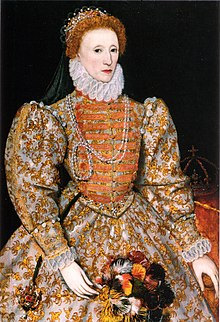by Steve Reiss (stevenreiss@scienbizippc.com) (image from
PatentVue by Envision IP)
On October, 16, 2017, the Federal Circuit handed down
Secured Mail Solutions v. Universal Wilde, Inc. (2017).
In this case, Secured Mail Solutions asserted, against Universal, several patents in several different technologies concerning "snail mail" handling.
Ultimately, the court found
all the patents to contain ineligible subject matter according to
Alice Corp. v. CLS Bank Int'l (2014) and the
Alice 2 Part Test.
I am only going to discuss claim 1 of the 7,818,268 ('268) patent, which was deemed a representative claim for technologies called Intelligent Mail Barcode.
Claim 1 of the '268 patent, recites:
A method of verifying mail identification data, comprising:
affixing mail
identification data to at least one mail object, said mail
identification data comprising a single set of encoded data that
includes at least a unique identifier, sender data, recipient data and
shipping method data, wherein said unique identifier consists of a
numeric value assigned by a sender of said at least one mail object;
storing at least a verifying portion of said mail identification data;
receiving by a computer
at least an authenticating portion of said mail identification data from
at least one reception device via a network, wherein said
authenticating portion of said mail identification data comprises at
least said sender data and said shipping method data; and
providing by said
computer mail verification data via said network when said
authenticating portion of said mail identification data corresponds with
said verifying portion of said mail identification data.
The Federal Circuit opinion starts out with a review of the current state of American patent eligibility law:
The Patent Act defines patent-eligible subject matter as “any new and useful process, machine, manufacture, or composition of matter, or any new and useful improvement thereof.” 35 U.S.C. § 101. The courts have created certain exceptions to the literal scope of §101, determining that laws of nature, natural phenomena, and abstract ideas are not patent-eligible. Alice Corp. v. CLS Bank Int’l, 134 S. Ct. 2347, 2354 (2014) (quoting Ass’n for Molecular Pathology v. Myriad Genetics, Inc., 133 S. Ct. 2107, 2116 (2013)).
The court summarized the 2-part
Alice Corp. test and
Enfish, LLC v. Microsoft Corp., 822 F.3d 1327, 1339 (Fed. Cir. 2016), the significant post-
Alice Federal Circuit decision holding a software-like claim contained eligible subject matter.
The court then went ahead to attack claim 1 of the '268 patent. Concerning
Alice Test, part I, the court said (highlights are mine):
Secured Mail argues that the claims are specifically directed to a sender generated unique identifier, which improved on the existing process both by reliably identifying the sender of the mail object and by permitting the sender to create a bi-directional communication channel between the sender and recipient of the mail object. The fact that an identifier can be used to make a process more efficient, however, does not necessarily render an abstract idea less abstract.
The claims of the Intelligent Mail Barcode patents are not directed to specific details of the barcode or the equipment for generating and processing it. The claims generically provide for the encoding of various data onto a mail object but do not set out how this is to be performed.
The claims state that various identifiers are affixed to a mail object, stored in a database, scanned from the mail object, and retrieved from the database. No special rules or details of the computers, databases, printers, or scanners are recited. Cf. McRO, 837 F.3d at 1315 (finding patent eligibility where the “claimed process uses a combined order of specific rules that renders information into a specific format that is then used and applied to create desired results”); Thales, 850 F.3d at 1349 (finding patent eligibility where the “claims specify a particular configuration of inertial sensors and a particular method of using the raw data from the sensors”). There is no description of how the unique identifier is generated or how a unique identifier is different from a personal name, or return address. Rather, the claim language cited by Secured Mail merely recites that the unique identifier is generated by the sender. The fact that the sender generates a barcode, which itself is not claimed, does not render the idea any less abstract.
Concerning
Alice Test, part II ("something more"), the court was no more merciful, saying (highlights again are mine):
In the Intelligent Mail Barcode patents, the sender-generated identifier is created by combining various pieces of data, such as a unique identifier, sender data,recipient data and shipping method data. The data need not even be in the form of a barcode, much less a specific new type of barcode. The claim language does not explain how the sender generates the information, only that the information itself is unique or new. The claim language does not provide any specific showing of what is inventive about the identifier or about the technology used to generate and process it. The district court is correct that the sender-generated identifier is not a sufficiently inventive concept. Id.at 1051–53.
***
In software/computer tech patents, if a claim is going to recite a result, it is looking more and more like you must specifically claim how that result is achieved.
The problem with where these
Alice Corp.-test cases are taking us is, all these requirements of specific showings and claim limitations, are totally severed from scope of the prior art. It ultimately feels like the courts are going to be requiring applicants to start out with a claim potentially far narrower than the prior art may actually require if you are going to get passed Section 101. So, even if the claims pass the
Alice Corp. test and are deemed eligible, the resulting claims may not be as valuable as originally hoped.
**





